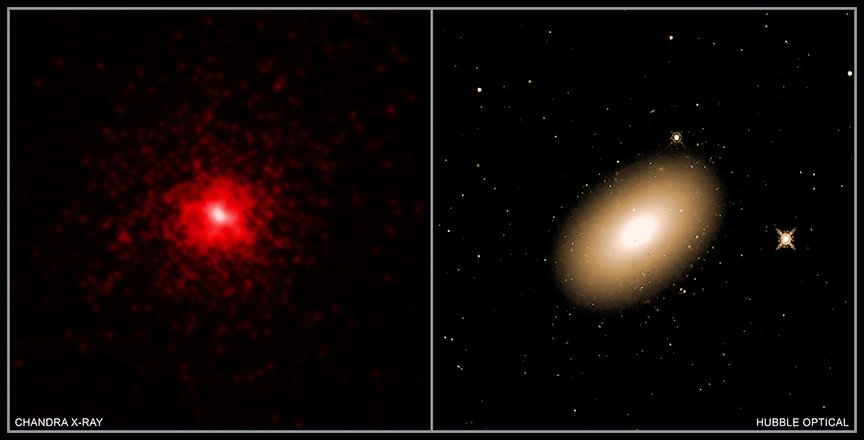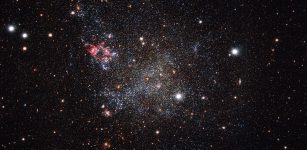Distant Galaxy Markarian 1216 Packed With More Dark Matter Than Expected
Eddie Gonzales Jr. – MessageToEagle.com – Astronomers using data from NASA’s Chandra X-ray Observatory, identified a galaxy with more dark matter packed into its core than expected.
The galaxy, known as Markarian 1216 (abbreviated as Mrk 1216), contains stars that are within 10 percent the age of the universe — that is, almost as old as the universe itself.
Scientists have found that it has gone through a different evolution than typical galaxies, both in terms of its stars and the invisible dark matter that, through gravity, holds the galaxy together.
Credit: X-ray: NASA/CXC/Univ. of CA Irvine/D. Buote; Optical: NASA/STScI
Mrk 1216 belongs to a family of elliptically shaped galaxies that are more densely packed with stars in their centers than most other galaxies.
Astronomers think they have descended from reddish, compact galaxies called “red nuggets” that formed about a billion years after the big bang, but then stalled in their growth about 10 billion years ago.
If this explanation is correct, then the dark matter in Mark 1216 and its galactic cousins should also be tightly packed.
“When we compared the Chandra data to our computer models, we found a much stronger concentration of dark matter was required than we find in other galaxies of similar total mass,” David Buote of the University of California at Irvine, said in a press release.
“This tells us the history of Mrk 1216 is very different from the typical galaxy. Essentially all of its stars and dark matter was assembled long ago with little added in the past 10 billion years.”
According to the new study, a halo, or fuzzy sphere, of dark matter formed around the center of Mrk 1216 about 3 or 4 billion years after the big bang.
This halo is expected to have extended over a larger region than the stars in the galaxy.
Previously, astronomers estimated that the supermassive black hole in Mrk 1216 is more massive than expected for a galaxy of its mass.
This most recent study, however, concluded that the black hole is likely to weigh less than about 4 billion times the mass of the Sun.
That sounds like a lot, but it may not be unusually massive for a galaxy as large as Mrk 1216.
“In the future we hope to go a step further and study the nature of dark matter,” said Buote.
“The dense accumulation of dark matter in the middle of Mrk 1216 may provide an interesting test for non-standard theories that predict less centrally concentrated dark matter, such as for dark matter particles that interact with each other by an additional means other than gravity.”
Written by Eddie Gonzales Jr. – MessageToEagle.com Staff Writer











